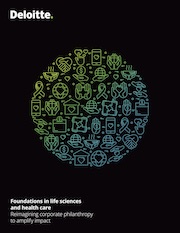Site Search
- resource provided by the Forum Network Knowledgebase.
Search Tip: Search with " " to find exact matches.
This toolkit is for seasoned donors, donor advised fund holders, foundation trustees, and staff who are taking steps to significantly ramp up the impact of their giving. No longer content with just “making good grants” or “doing good things for the community,” you have taken a fresh look at your goals, strategies, and outcomes and decided that you could do things differently to achieve even more.
We all know that setting bolder, bigger goals for impact is only step one. Implementing strategies and achieving these goals typically involves a winding path full of experiments, iterations, and obstacles. This toolkit is crafted to help seasoned funders anticipate common obstacles to high-impact philanthropy and learn about effective strategies to overcome them.
More than $1 million was awarded to more than two dozen local nonprofits by the Bunbury Fund of the Princeton Area Community Foundation.
The grants, totaling $1,035,205, were awarded to 26 nonprofit organizations in 2023. It marks the fifth year in a row that the Bunbury Fund issued more than $1 million in funding.
"Through our experience as Bunbury Fund Advisors, our team continues to learn about the key issues in our region and what it takes for a nonprofit organization to effectively address them, often as a result of undercapitalization," said Jamie Kyte Sapoch, Lead Fund Advisor and former Community Foundation Trustee. "We believe that the capacity building resources approved by the Bunbury Fund in 2023 will result in meaningful, enhanced delivery of missions for the 26 nonprofit organizations listed below."
When considering how to improve health outcomes for low-income individuals, most people think about providing access to good medical care and keeping the cost of that care as low as possible. What people rarely think about is the connection between good health and quality affordable housing.
Sample board committee descriptions, including roles and responsibilities of committee members
The New Jersey Council for the Humanities (NJCH) will distribute $211,743 in funding to 18 organizations in its latest round of grant funding awards. Of these, 8 awards are Incubation Grants, which help organizations plan, research, prototype, experiment or expand existing programs. The 10 remaining awards are Action Grants, which help organizations implement humanities-based programs, which may be new or existing.
Notably, this round marks the first time since launching the Incubation and Action Grants in 2016 that NJCH received more applications and letters of intent for Incubation Grants than for Action Grants. NJCH received 42 total applications, of which 22 were for Incubation Grants, and 20 were for Action Grants.
“Incubation Grants serve the Council’s goal of increasing organizational capacity in the humanities sector by giving institutions the time and resources for program planning and development. We consider them a particular strength of our grants program since funders often do not provide this type of funding opportunity,” said Dr. Carin Berkowitz, NJCH executive director. “There’s real value in providing organizations the opportunity to spend more time thinking and planning programs, and we’re proud to provide that.”

As a follow-up to our Giving in Indiana study (released earlier this year), Indiana Philanthropy Alliance is pleased to share this snapshot of promising practices for advancing diversity, equity and inclusion in Indiana philanthropy. Throughout our state, foundations are incorporating the values of diversity, equity and inclusion (DEI) into their organizational cultures; engaging diverse populations as staff, board members, donors, and grantees; and working to make their communities more welcoming places. This report is an effort to capture a sampling of these endeavors.

The role of corporate philanthropy is at a pivotal point as executive, employee, and customer expectations shift and stakeholders increasingly expect businesses to value and invest in societal welfare. In this rapidly evolving environment, there is opportunity for corporate foundations to reevaluate traditional approaches to grant making, social responsibility, and engagement with counterpart organizations.
The life sciences and health care industry provides an exceptionally compelling illustration of macrophilanthropic trends and possibilities. Although all industries can constructively transform existing corporate philanthropy models, the life sciences and health care ecosystem is experiencing dramatic increases in consumer engagement, perceived social responsibility, and global attention that make more thoughtful, strategic philanthropic investment especially urgent. In this paper, they examine the current health ecosystem, evolving stakeholder expectations, the unique position of life sciences and health care foundations to effect critical change,and alternative engagement models with demonstrated track records of success on an international scale.
